It doesn’t feel like it’s been three months since Larian Studios freed Baldur’s Gate 3 from its Early Access shackles and unleashed its huge Dungeons & Dragons epic on the world. In that time, it’s quickly become the highest-reviewed game on Metacritic this year, making it a likely shoo-in for Game of the Year nominations across multiple outlets, and more importantly, myself and so many other players haven’t stopped thinking about it, our enthusiasm for it burning as brightly today as it did when the game first launched. But time marches on, and here we are three months removed from that August 3 PC release.
Already in those three months since release, Baldur’s Gate 3 has arguably had more impact than most games could ever dream of. Players are still finding new ways to explore Larian’s take on the Forgotten Realms, discovering new things they can do and new ways of doing them. The fact that people are still so tuned in to the game speaks to what Baldur’s Gate 3 has been able to accomplish, and why, as the video game industry seems to be imploding upon itself, it stands as a testament to the ways in which making video games needs to change.

Why it mattered
Coming off of Larian’s success with Divinity: Original Sin II, Baldur’s Gate 3 fills a void long left by BioWare, as that studio deals with its own issues after Anthem and Mass Effect: Andromeda failed to take off, and as Dragon Age: Dreadwolf remains in development after nearly a decade. RPG fans have been hungry for a deep, relationship-driven, customization-heavy game for about that long. While BioWare is often considered the go-to developer for these types of games, other developers have been active in the space, such as veteran RPG developer Obsidian with its Pillars of Eternity duology launching in 2015 and 2018, and French studio Spiders with its RPG Greedfall, which was released to heavy criticism for its colonialist storyline but beckons to the format of BioWare’s most iconic works. Persona 5 might not be a direct homage to BioWare’s output given that the social-interaction-driven structures of Persona 3 were well-established by the time Mass Effect and Dragon Age became the cultural force they did, but it did scratch a similar itch as those beloved games.
Baldur’s Gate 3 understands what Persona 5 and Fire Emblem: Three Houses did to earn such ardor from its players. For a single-player RPG, characters that fans latch onto are key to establishing the kind of enthusiasm that persists in people’s minds long after they’ve played the game. If people are still talking and thinking about it, engaging in fandom, creating fan art, and buying merch months and years later, then it persists in the hearts and minds of fans, and people are most definitely still thinking about BG3’s cast—the ever-hopeful Barbarian Karlach, the devilish and sexy Astarion, and all the rest. Every day since Baldur’s Gate 3’s launch, I’ve seen new, incredible fan art pop up on my social feeds, TikTok trends formatted to poke fun at fan-favorite characters, and memes forming around each party member’s quirks. Don’t tell me Gale is the type of guy to say “you have won the internet.” I have enough psychic damage from the tadpole in my head already.

But on top of meeting cool characters and learning their stories, Baldur’s Gate 3 also lets you fuck them. Baldur’s Gate 3 has some of the best, most well-produced sex scenes in a game of its scale. Romance is a draw in plenty of RPGs, and Larian seems very in tune with how love stories can help make players feel powerfully attached to a cast, whether they involve your own custom character or see sparks flying between existing ones. You can play as most of the party members by choosing them as your origin character, and that has made shipping your favorites an easy endeavor. Do you want to make Shadowheart and Lae’zel an enemies-to-lovers relationship? Do you want Astarion to fuck Halsin as he turns into a bear? Do you want Wyll and Karlach to find comfort in each other after they both go through literal hell? You can do that. Larian understood the assignment and has given the fanfiction brain-poisoned among us a feast.
How the actors have kept Baldur’s Gate 3 in fan’s hearts
Part of maintaining any modern fandom is having people in the spotlight who keep it alive. In video games, they can be public-facing devs and community leads. But in the era of TikTok and streaming, the actors behind Baldur’s Gate 3’s excellent party have done a lot of the heavy lifting. Part of this is due to Larian’s own marketing machine, as the studio has had this group on official panels, in marketing materials, and even had them all play Dungeons & Dragons together to promote the game. But the crew also just seems to be really excited about the game they’ve helped make and the community that’s formed around it.
One of the best examples of this was a chain of social videos with members of the cast reading lines from Tumblr in character. These videos have become so embedded in the community that Shadowheart is now known as “God’s favorite princess” by people who never knew of the original meme. The cynic in me could call this playing to the crowd, but given that the cast has also been heavily involved in streams and meet-ups, and seems to have become close to one another in the process, I buy into it.
Baldur’s Gate 3’s marketing machine appreciates how important the talent is to making a character feel alive. With AI encroaching on the profession, the visibility of voice actors is a key part of ensuring fans know who is behind the characters they love. Baldur’s Gate 3’s success illustrates that it’s not only important to promote the people who embody the heroes and villains we love, but it also helps keep your game in the public consciousness.
A rich, systems-driven well to draw from
While characters and relationships are a large part of what has kept Baldur’s Gate 3 in public discussion for months, the game’s digital recreation of a rich tabletop game has made it one of the most rewarding RPG experiences in recent memory. When I wrote my review of the game, I noted that, while it does attempt to emulate the freedom of a tabletop game, complete with a wealth of reactive outcomes and solutions all coded into the game on a systems level, I recognized that one day, all those ones and zeroes would be well-documented and understood, and the illusion of near-limitless responsiveness would shatter. That day still looms over Baldur’s Gate 3, but for now, players continue to find new, inventive ways to circumvent what were once thought to be hard-coded restrictions.
Baldur’s Gate 3 has an overwhelming amount of options to play with, from dozens of spells with practical use outside of combat, to class and race customization options that open new paths forward other characters won’t see, and savvy players are still finding ways to utilize all these systems to find new branches to Baldur’s Gate 3’s adventure. Just recently, it was discovered that you can save both the secret companion Minthara and the Tiefling travelers she is seeking to wipe out, despite those being framed as mutually exclusive outcomes. It requires some forethought and established knowledge of the game’s second-act sequences, but it is possible, and Baldur’s Gate 3 is reactive to what seemed like an impossibility at one point.
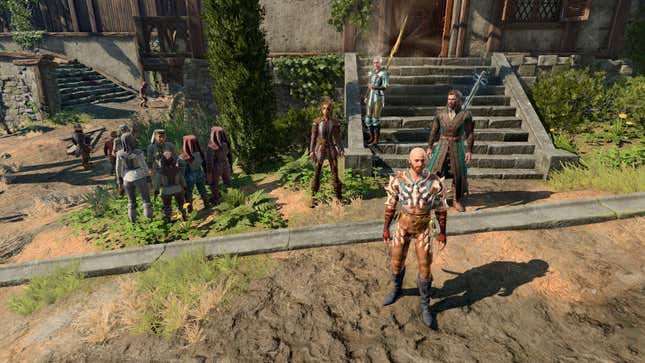
Even as fans comb through Baldur’s Gate 3’s myriad possibilities, I keep waiting for the day when it feels like we’ve figured it all out. I was active on the BioWare forums during the original Mass Effect trilogy’s run, and because everyone was deep in that game’s code trying to figure out how to reach certain conclusions, I have an intimate knowledge of how choices made in the first Mass Effect lead to different possibilities in Mass Effect 3. But Baldur’s Gate 3 is just one game, bursting with more permutations in its runtime than most games can even dream of. I’m still amazed when I see fans trying out different combinations of characters, abilities, and relationships, and seeing what secret dialogue or quest branch Larian has hidden away for the most specific interactions. It’s almost overwhelming to consider, but fans are still chipping away at Baldur’s Gate 3’s armor as we see just how deep the rabbit hole goes.
How Larian has supported Baldur’s Gate 3
Perhaps it’s because of all that depth that Larian’s post-launch support has been incredibly thorough. The notes for some of its bigger patches have over 1,000 individual bullet points on their lists, and some pretty key features have been added to the game for the whopping price of zero dollars. This has ranged from allowing players to change their appearance, to making a cat hairless, and even making tweaks to the game’s ending after fan feedback. It feels as if Larian has had its fingers on the pulse of the problems players are having, and is putting out fixes at a staggering frequency.
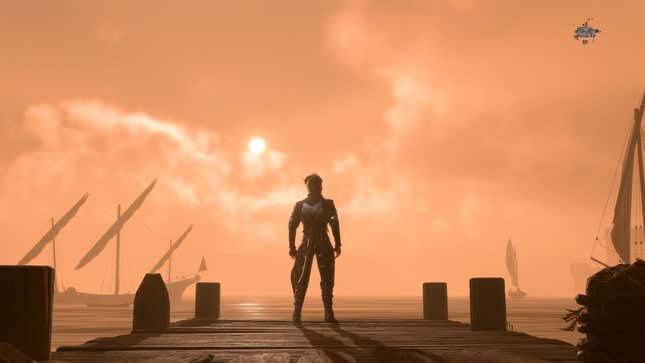
But even beyond bug fixes and gameplay tweaks, Larian has stated that it has much larger developments in the works. Baldur’s Gate 3 is on PC and PlayStation 5, but after some handshaking with Microsoft, it’s coming to Xbox with some concessions made for the Xbox Series S version. PC and console cross-play is in the works, and the studio still has planned changes for the game’s abrupt ending.
Baldur’s Gate 3 is bigger than video game RPGs
While much of Baldur’s Gate 3’s success is to be attributed to Larian’s own work, it also can’t be understated that interest in Dungeons & Dragons and tabletop RPGs is at an all-time high. Thanks to cultural juggernauts like Critical Role and Stranger Things bridging the gap, more people are playing and creating within the tabletop space. But while Baldur’s Gate 3 has been lifted up by Dungeons & Dragons and tabletop games, it’s also elevated interest and understanding of the medium it was built on.
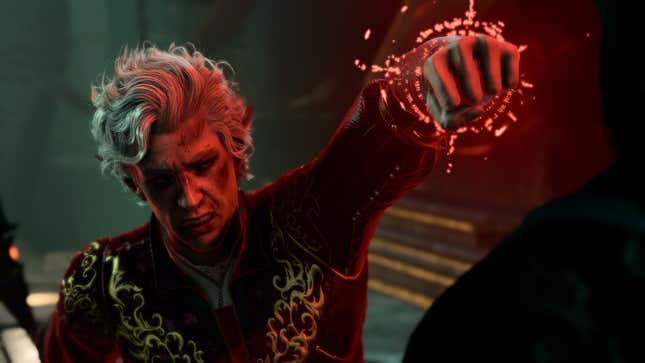
Marketing pushes like having the voice cast play Dungeons & Dragons together are part of that, but foregrounding concepts like dice rolls, skill checks, and other mechanics that are often hidden behind a curtain in other RPGs has helped bolster these ideas in the cultural lexicon. These concepts have always existed in stat-driven video games with skill and charisma checks, but people are now engaging with these systems in ways that a lot of mainstream RPGs don’t usually require.
With that introduction to those systems and that space, Baldur’s Gate 3 joins cultural phenomena like Critical Role in making those ideas a more well-understood language. It’s how meme songs like Tom Cardy’s musical recreation of a moment in a tabletop campaign can be a viral, universally relatable video at this moment.
On the other hand, bringing Dungeons & Dragons into the public consciousness has also meant looking back at the source material and considering whether it’s a universe worth telling stories in. The original tabletop game launched in 1974 and has seen multiple revisions and updates in the nearly 50 years since. Even in its current edition, there are some broad, essentialist attitudes about race that are being newly reckoned with in recent years—the treatment of goblins as just inherently evil as one very simple example. Baldur’s Gate 3 puts these dynamics at the forefront of several character relationships and storylines. Dungeons & Dragons has been under fire for these issues for a long time, and while over time it has made attempts to move past certain fantasy stereotypes which often have their roots in real-world racism, there are still characters in Baldur’s Gate 3’s cast who, if you were to pull up a character sheet, would have “racist” listed in their traits.
There’s an argument to be made that writing fantasy racism into your story can function as political commentary, and an attempt to examine real-world dynamics from the comfortable remove of places that aren’t real, but in Baldur’s Gate 3, a lot of these relationships feel like they’re simply being recreated uncritically, as if they’re a reality of this world that the game is unwilling to budge on.
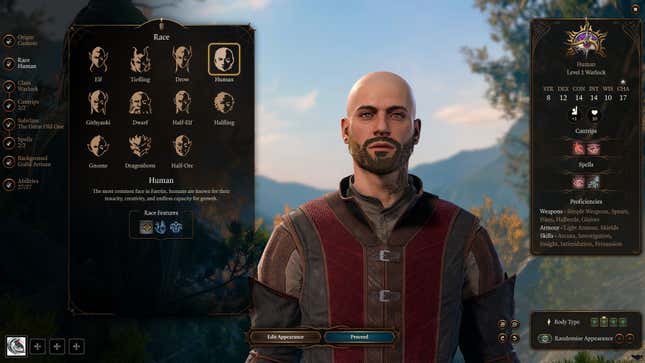
Much of Dungeons & Dragons’ racism falls into bioessentialism, which suggests that certain traits or moralities are inherent to different races, and thus, that certain characters of a different race whom the lore artificially designates won’t trust them, don’t. These dynamics bleed into the game design, which gives you specific mechanical stat boosts and drawbacks framed as perks for playing as different races, but when you think about how the Dungeons & Dragons world makes sweeping declarations about who and what people can be, there’s a more insidious statement being made.
Sure, you can push back with your own dialogue options, Shadowheart and Lae’zel can get past their differences, but nothing really changes on a systemic level, and the Dungeons & Dragons world continues to beat this drum. Fiction often falls back on invented prejudices as a way of talking about the ones we deal with today, but Baldur’s Gate 3 highlights how its source material doesn’t seem as interested in talking about prejudice as it is in just reminding you it exists. Its lack of desire to interrogate these dynamics is a pretty faithful recreation of Dungeons & Dragons’ own disinterest, even after it’s faced criticism of these ideas for decades.
What can we learn from Baldur’s Gate 3?
Right now, video games are at a reckoning point for sustainability. Thousands of developers have been left without jobs due to extensive layoffs across the industry, and meanwhile, Baldur’s Gate 3 is being lifted up as a “new standard” for AAA games. But Larian Studios is notable in that it’s a privately traded company and is not beholden to majority shareholders that might push for more profit-driven creative decisions over the ones that made Baldur’s Gate 3 the likely award-winning game it is.
Bloomberg has a good story on this and how launching in Early Access in 2020 has given Larian more upfront revenue to fund further development. But even as a privately owned company, Larian still has some financial backing from beyond its own pockets. As A16Z Games points out in its video diving into Baldur’s Gate 3‘s success, Tencent has 30 percent ownership of the company, and even if that’s not enough to make it a majority shareholder, it’s still cash that allows a game of this scale and quality to exist. Baldur’s Gate 3’s money stream comes from Larian’s past projects, its Early Access sales, and some non-majority stakeholders, but the studio’s relative financial freedom is what allowed its vision to thrive.
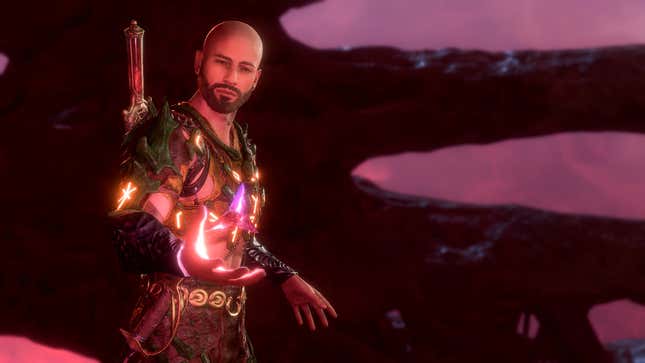
Baldur’s Gate 3 isn’t great just because the team at Larian is exceptionally talented; it’s great because it was made under conditions that allowed it to thrive, rather than just reach the finish line. Most video games are made by talented people, but they’re made in an industry that is so wrapped up in quarterly financial calls and endless revenue streams that the people up top can’t see past one quarter to see what the next year looks like. Video game development is in desperate need of reform, because as it stands right now, games like Baldur’s Gate 3 have become a rarity, and the people who suffer most are the people who make and play them, rather than the decision-makers up top who put people’s livelihoods on the line every time they make a decision.
Can Baldur’s Gate 3’s success in a year when everything around it seems to be falling apart be a wake-up call for the video game industry? We can only hope.






















-150x150.jpg)
